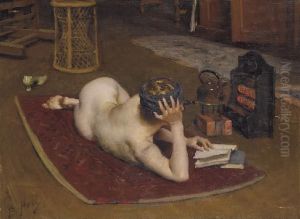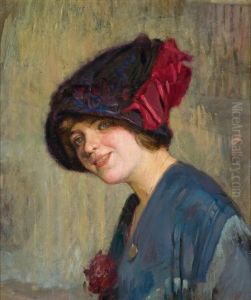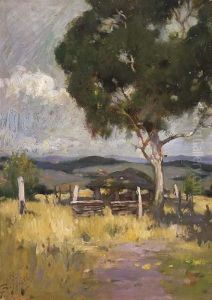Bernard Hall Paintings
Bernard Hall was an English-born Australian artist and art teacher who had a significant impact on the development of Australian art in the late 19th and early 20th centuries. Born in Manchester, England, on 16 December 1859, Hall initially pursued a career in engineering before turning his attention to art. He studied at the Manchester School of Art and later at the Royal College of Art in London.
Hall's artistic career began to flourish after he moved to Australia. In 1892, he was appointed as the head of the National Gallery of Victoria Art School in Melbourne, a position he held for 31 years until his retirement in 1923. During his tenure, he was a highly respected teacher and his influence extended to a generation of Australian artists. He emphasized the importance of technical proficiency and the study of classical art, which was reflected in the academic style of painting that dominated the school under his leadership.
As an artist, Hall was known for his portraits, landscapes, and still life paintings. His work was characterized by a solid academic foundation, with a focus on realism and a clear admiration for the Old Masters. In addition to his teaching and painting, Hall played a significant role in the administration of art in Australia. He was involved in the selection and acquisition of artworks for the National Gallery of Victoria and participated in numerous art societies and exhibitions.
Despite his contributions to Australian art, Hall's conservative approach eventually led to a push for more progressive art movements in Australia, and he was often at odds with the avant-garde community. After his retirement, Hall continued to paint until his death in Melbourne on 14 October 1935. Over the course of his life, Bernard Hall left a legacy as a key figure in the Australian art world, shaping the education of many artists and contributing significantly to the cultural landscape of his adopted country.

















